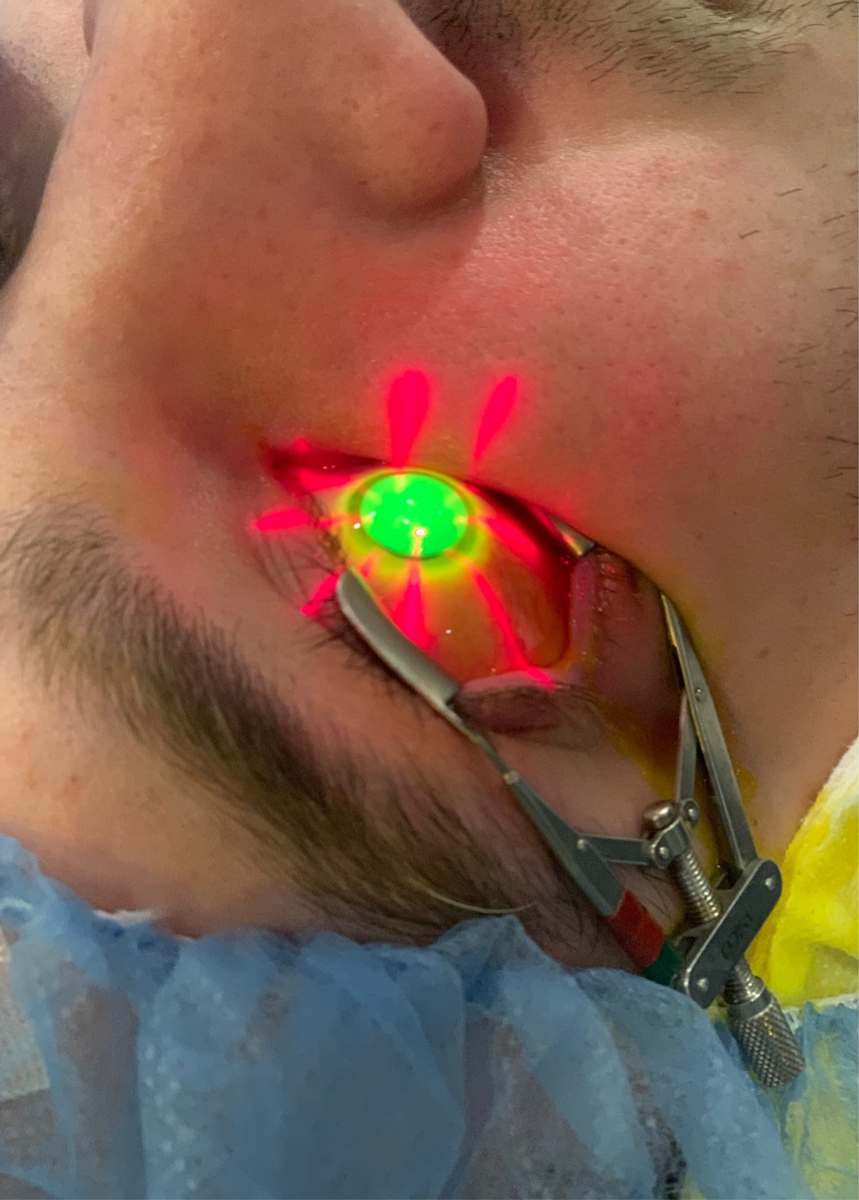 |
|
Standard CXL is shown to be safe and effective to halt KC progression in children and adolescents in the long-term in 82% of eyes studied. Photo: Lily Arendt, OD. Click image to enlarge. |
Keratoconus (KC) in children is known to progress faster, which makes early recognition and management of the disease that much more imperative. Corneal crosslinking (CXL) is an available treatment, but previous studies have reported CXL to be less effective in pediatric KC patients. In a recent study, researchers assessed the efficacy and safety of CXL using the standard method (Dresden protocol) in a pediatric group with progressive KC and compared the results between 20% dextran-based riboflavin and 1% hydroxypropyl methylcellulose–based riboflavin. It showed that standard CXL reduced KC progression in children up to seven years old.
Standard CXL was performed in 74 eyes (58 patients, 45 males), 53 eyes with methylcellulose and 21 with dextran. Exams were performed at baseline, three and six months and one, two, three, four, five and seven years of follow-up with uncorrected distance visual acuity (UDVA), corrected distance visual acuity (CDVA), a complete ophthalmologic examination, anterior segment OCT, Scheimpflug corneal tomography and specular microscopy. Results revealed improvement and stability of UDVA and CDVA in 82% of eyes.
“An important thinning in pachymetry measurements at the third postoperative month was found in both groups, returning to baseline values after six months of the procedure only in the dextran group,” the study authors explained in their paper. “This initial marked decrease in corneal thickness was observed in most standard CXL studies with dextran-based riboflavin, followed by a gradual increase toward preoperative levels.”
The persistent thinning in the methylcellulose group may indicate that the treatment was deeper and stronger, the authors suggested, as a previous study found “marked deep structural changes with an absence of keratocytes in standard CXL and accelerated CXL using methylcellulose-based riboflavin during 30 minutes of soaking time in both treatments, with more pronounced changes in standard CXL.” This raises concerns about its use in standard CXL, they added.
In the hydroxypropyl methylcellulose group, the endothelial cell count remained stable during evaluation. However, in the dextran group, a significant reduction was found at three to four years of follow-up.
All cases that had an increase of more than 1.5D in max keratometry at three and six months of follow-up regressed to baseline or even improved max keratometry at one year of follow-up. “This suggests that during the first follow-up period after CXL, the increase in keratometry may be transient due to changes in the epithelium, corneal collagen and extracellular matrix caused by the CXL treatment, and it is advised to wait at least one year after the procedure to suggest post-CXL progression,” the authors explained.
They concluded that standard CXL is safe and effective to halt KC progression in children and adolescents in the long-term.
Polido J, dos Santos Araujo MEX, Wakamatsu TH, et al. Long-term safety and efficacy of corneal collagen crosslinking in a pediatric group with progressive keratoconus: a 7-year follow-up. Am J Ophthamol. January 11, 2023. [Epub ahead of print]. |

